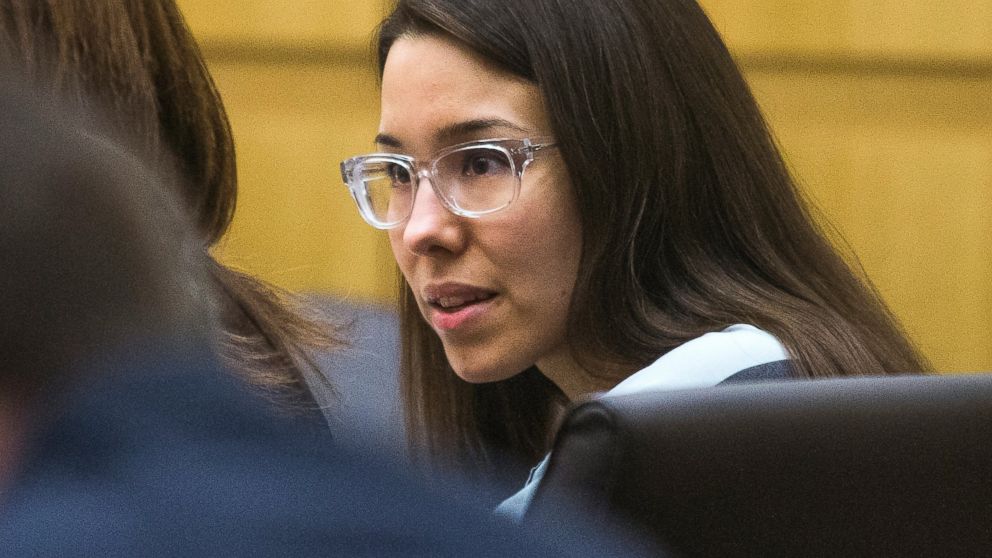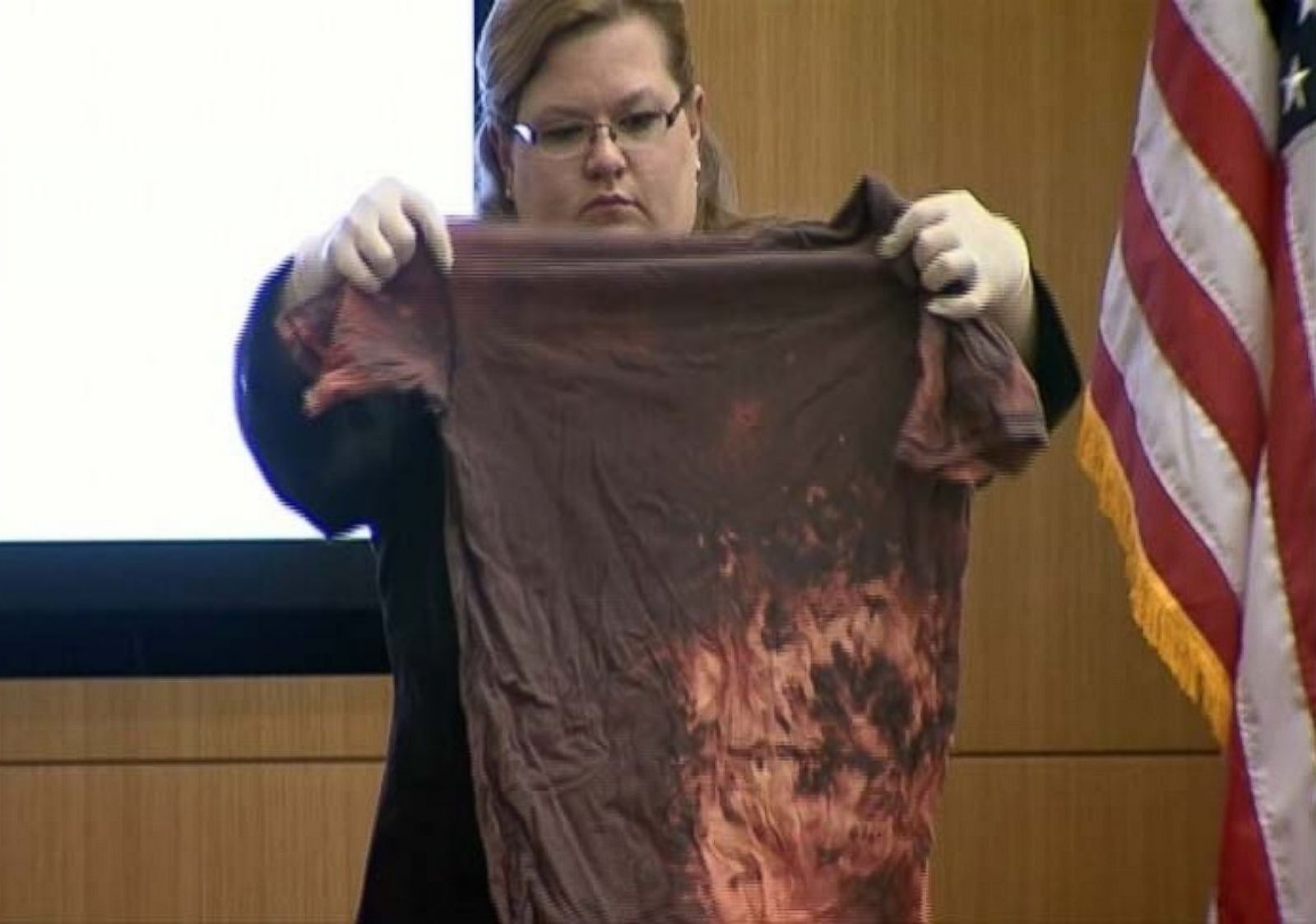The Jodi Arias trial captivated the nation, becoming one of the most controversial and highly publicized criminal cases in recent history. The trial evidence, including graphic photos, played a pivotal role in shaping public perception and influencing the jury's decision. For many, the case remains a subject of fascination and debate, offering insight into the complexities of human behavior, the justice system, and media influence.
The Jodi Arias trial evidence photos have been at the center of discussions about the ethical implications of graphic imagery in court proceedings. These photos, which depicted the victim's injuries and crime scene details, provided critical information that helped prosecutors build their case against Arias. As we delve into this topic, we will explore the significance of these photos, their impact on the trial, and the broader implications for the legal system.
This article aims to provide an in-depth analysis of the Jodi Arias trial evidence photos while addressing the key questions surrounding this case. By examining the evidence, legal strategies, and public reaction, we hope to shed light on the complexities of this high-profile trial and its lasting impact on society.
Read also:Kevin Mcgarry The Rising Star In Hollywood
Table of Contents
- Biography of Jodi Arias
- Timeline of Events
- Analysis of Trial Evidence Photos
- Legal Impact of Graphic Evidence
- The Role of Media in the Trial
- Psychological Insights into the Case
- Ethical Considerations of Using Graphic Photos
- Public Reaction to the Evidence
- Long-Term Effects on the Legal System
- Conclusion and Final Thoughts
Biography of Jodi Arias
Before delving into the details of the Jodi Arias trial evidence photos, it is essential to understand the background of the defendant. Jodi Arias was born on July 22, 1980, in Salinas, California. She grew up in a strict household with parents who emphasized discipline and academics. Despite her seemingly ordinary upbringing, Arias's life took a dramatic turn when she became embroiled in a tumultuous relationship with Travis Alexander.
Below is a summary of Jodi Arias's personal details:
| Name | Jodi Arias |
|---|---|
| Date of Birth | July 22, 1980 |
| Place of Birth | Salinas, California |
| Education | Attended California State University, Monterey Bay |
| Occupation | Various jobs, including administrative roles |
Timeline of Events
The events leading up to the Jodi Arias trial began in 2008 when Travis Alexander was found dead in his Mesa, Arizona, home. The case quickly gained national attention due to its shocking nature and the graphic evidence presented during the trial. Below is a timeline of key events:
- June 4, 2008: Travis Alexander is killed at his home.
- June 9, 2008: Jodi Arias is arrested and charged with first-degree murder.
- January 2013: The trial begins, with graphic evidence, including photos, being presented to the jury.
- May 2013: The jury finds Jodi Arias guilty of first-degree murder.
- July 2013: The jury deadlocks on sentencing, leading to a retrial on the penalty phase.
Analysis of Trial Evidence Photos
The Jodi Arias trial evidence photos were a crucial component of the prosecution's case. These images provided a visual representation of the crime scene and the extent of Travis Alexander's injuries. The photos, which included close-up shots of the victim's body, were both graphic and disturbing. Prosecutors argued that the evidence was necessary to establish the brutality of the crime and the intent behind it.
Key Features of the Evidence Photos
The evidence photos presented during the trial included the following:
- Crime scene images showing the location and positioning of Travis Alexander's body.
- Close-up shots of the victim's injuries, including the 27 stab wounds and gunshot wound.
- Photographs of the bathroom where the murder took place, illustrating the extent of the bloodshed.
According to a report by the National Institute of Justice, the use of visual evidence in court proceedings can significantly impact jurors' perceptions of the case. In the Jodi Arias trial, the photos served as a powerful tool for the prosecution, helping to paint a vivid picture of the crime.
Read also:Oj Simpson And Marguerite Whitley A Deep Dive Into Their Lives And Legacy
Legal Impact of Graphic Evidence
The use of graphic evidence in the Jodi Arias trial raised important legal questions about its admissibility and potential to bias jurors. While the photos were deemed relevant by the court, concerns were raised about their potential to inflame the jury's emotions. This tension between relevance and prejudicial impact is a common challenge in criminal cases involving violent crimes.
Precedents in Similar Cases
Legal experts often cite precedents from other high-profile cases when discussing the admissibility of graphic evidence. For example, in the O.J. Simpson trial, the prosecution faced similar challenges in presenting evidence that was both relevant and potentially prejudicial. The Jodi Arias trial evidence photos sparked debates about whether the probative value of such evidence outweighs its potential to unduly influence the jury.
The Role of Media in the Trial
The media played a significant role in shaping public perception of the Jodi Arias trial evidence photos. Extensive coverage of the case, including live streaming of court proceedings, brought the trial into the homes of millions of viewers. This unprecedented level of media attention had both positive and negative effects on the legal process.
Positive Effects of Media Coverage
On one hand, media coverage helped to educate the public about the complexities of the legal system and the importance of evidence in criminal trials. It also provided a platform for legal experts to analyze the case and offer insights into the proceedings.
Negative Effects of Media Coverage
On the other hand, the media's focus on sensational aspects of the case, including the graphic evidence photos, raised concerns about its impact on the jury and public opinion. Critics argued that the media's portrayal of the case could have influenced the jury's decision and undermined the fairness of the trial.
Psychological Insights into the Case
The Jodi Arias trial evidence photos offer a window into the psychological dynamics of the case. Experts have analyzed the relationship between Arias and Alexander, suggesting that it was characterized by jealousy, possessiveness, and ultimately, violence. The photos, which depicted the aftermath of the crime, serve as a stark reminder of the consequences of unchecked emotions.
Understanding the Motive
Psychologists have explored various theories about Arias's motive for killing Alexander. Some suggest that jealousy and a desire for control were key factors, while others point to mental health issues as potential contributors. The evidence photos, along with other testimony, helped to build a psychological profile of the defendant and shed light on the factors that may have led to the crime.
Ethical Considerations of Using Graphic Photos
The use of graphic evidence in court proceedings raises important ethical questions about the balance between justice and compassion. While the photos in the Jodi Arias trial were deemed necessary to establish the facts of the case, their impact on jurors and the public cannot be ignored.
Protecting Jurors from Trauma
Court systems must consider the potential psychological impact of graphic evidence on jurors. Studies have shown that exposure to such images can lead to trauma and emotional distress. Courts have a responsibility to ensure that jurors are adequately prepared for the evidence they will encounter and are provided with support if needed.
Public Reaction to the Evidence
The Jodi Arias trial evidence photos sparked a wide range of reactions from the public. Some viewed the images as necessary to understand the severity of the crime, while others criticized their use as gratuitous and exploitative. Social media platforms became battlegrounds for debates about the case, with opinions often divided along emotional lines.
Impact on Public Opinion
Public opinion can significantly influence the outcome of high-profile cases. In the Jodi Arias trial, the graphic evidence photos played a key role in shaping public perception of the defendant and the crime. While some believed the photos proved Arias's guilt beyond a reasonable doubt, others questioned their necessity and impact on the legal process.
Long-Term Effects on the Legal System
The Jodi Arias trial evidence photos have left a lasting impact on the legal system, raising important questions about the use of graphic evidence in court proceedings. As technology continues to evolve, courts must grapple with how to balance the need for transparency with the potential for emotional manipulation.
Future Implications
Legal experts predict that the use of visual evidence in trials will continue to grow, driven by advancements in forensic science and digital technology. However, courts must remain vigilant in ensuring that such evidence is used responsibly and ethically, prioritizing justice over spectacle.
Conclusion and Final Thoughts
The Jodi Arias trial evidence photos remain one of the most controversial aspects of this high-profile case. While they provided critical information to the jury, their graphic nature sparked debates about their admissibility and impact on the legal process. This article has explored the significance of the evidence, its role in the trial, and the broader implications for the justice system.
We invite readers to share their thoughts and opinions in the comments section below. Additionally, we encourage you to explore other articles on our site for more in-depth analyses of legal and social issues. Together, we can continue the conversation about the complexities of justice and the importance of ethical considerations in the legal system.


